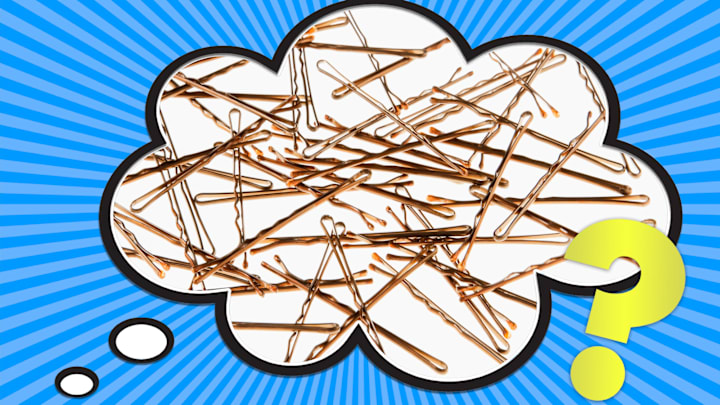When someone needs to keep their hair in place—or try to pick a lock at the spur of the moment—they often reach for a bobby pin, the hair clip that branches off to make for a snug and slip-free fit. So why do we call them bobby pins? Does someone named Bobby have anything to do with their creation?
Not really. Bobby pins got their colloquial name from the bob hairstyle trend that exploded in popularity in the early 20th century. At the time, women typically sported longer hair. But when dancer Irene Castle opted for a short and sensible cut, her admirers followed suit—and ignited a sexist controversy in their wake. Many beauty salons refused to cut the hair of their female clients that short, sending women to barbers. (When the style persisted well into the 1920s, hair salons eventually relented.)
The style was named the Castle bob for a bit, after the woman who popularized the style, but eventually settled into “the bob.” To keep the hair fixed in place, hair clips were often used, and these clips became known as bobby pins.
Sourcing the inventor of the bobby pin can be tricky. Some credit Luis Marcus, a San Francisco cosmetics mogul, who peddled two-packs of handmade hair clips for 35 cents. “There was talk of naming it the Marcus pin,” his daughter, Elaine Marcus, told The Los Angeles Times in 1990 following the death of her father. “But he named it for bobbed hair,” she confirmed.

Other people whose names have been credited with originating the bobby pin over the years include Frank DeLong, Hazel Hook Waltz, Jacob Herbert, and Henry Hubbard, who may have developed the manufacturing process employed to make bobby pins.
The bobby pin wasn’t the only attempt to reinvent hair clips. The Hump hair pin, which was devised by Solomon Goldberg in 1903, was so named for its crooked center that helped keep it in place. Though it likely wasn’t the first hair accessory to have such a design, it was probably the most well-marketed one, leading many people to believe it was the first of its kind.
Goldberg’s pins were perfect for people with long hair, which caused a bit of a crisis when Castle’s short new ‘do caught on with the public. Goldberg later claimed to have invented the bobby pin, which likely is not accurate—though his company did offer the Hold-Bob, another type of clip, which was devised by his wife, Ruth.
As for whether you can really pick a lock with a bobby pin, the answer is yes—provided it’s bent into the required shape of a lock pick and that you have a second one handy to act as a tension wrench for leverage. Some locks are too narrow for a bobby pin, so don’t count on them for your illicit break-in activities.
Have you got a Big Question you’d like us to answer? If so, let us know by emailing us at bigquestions@mentalfloss.com.
